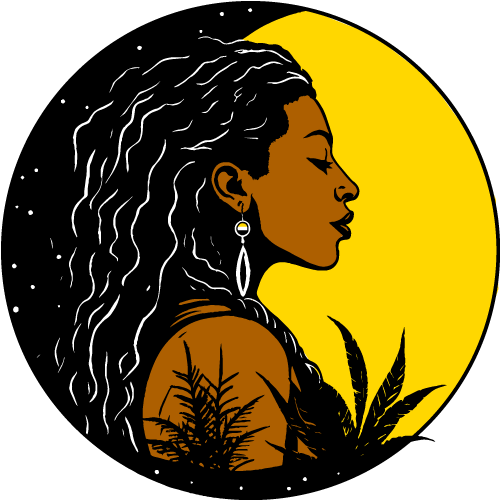There was time when Cannabis was such an important cash crop that farmers were penalized for NOT growing it. Now they run the risk of fine and imprisonment by merely having the plant on their land, dead or alive. Just so there is no confusion about what this article is about; the other common names for this plant include ganja, dagga, grass, pot, reefer, weed, Cannabis, marijuana, and herb. In the 1900s doctors published one hundred papers recommending marijuana as safe and useful medicine, as part of Materia medica. In the 1930s Britain alone purchased and imported about 1.5 million hundredweight of Cannabis every year for cordage, sacking, and sail making for the British Navy. At that time, there was manufacture of cooking oil from Cannabis seeds and furniture polish made from the seed trash. People were placing twigs of Cannabis under their mattresses to ward off bedbugs.
A native of northern India, Cannabis grows easily from seed and is cultivated widely in a wide range of soil types and climates (even indoors). The best crops however, come from plants grown outdoors in cool tropical climates. The active chemicals are more concentrated on the flowering tops of the female plants. A known trick of the trade is to pull up the male plants to increase the potency of the psychoactive properties in the female plants. Since ancient times this (unfortunately now infamous) plant has been helping humanity most gracefully, and without any gratitude in return. In 1937 the American industry lobbied against growing Cannabis and eventually succeeded in completely criminalizing the mere association to this plant. What happened? When did Cannabis go bad?
Marijuana (Cannabis sativa), is one of the world’s oldest and most cultivated psychoactive plants. The species name sativa means “with a long history of cultivation.” Archeologist found clay pipes containing Cannabis wrapped in hemp cloth dated from 400 B.C. Historical evidence shows that during biblical times, marijuana was used in ceremony, religious rituals, and celebrations; and in food, cooking oil, medicine, making fabric, and paper products. The Holy Bible itself was at one time printed on (hemp) Cannabis paper, as it was considered the best paper there was. The Shinto priests of Japan wear robes made of hemp fabric, which they revere as a symbol of fertility and purity.
Despite all attempts to soil the reputation of this powerful healing plant, Cannabis is still considered sacred in the medicinal traditions of some native cultures. In traditional herbalism, Cannabis is highly revered for its ability to improve mood, alter consciousness, and for treating symptoms of nausea, respiratory ailments, fever, and pain, and much more. It is one of the five sacred plants of Indian Vedic tradition, and used today in Ayurveda to treat a variety of health issues which include low libido.
Traditional Chinese medicine uses Cannabis seeds to treat gout, absent mindedness, constipation, malaria, rheumatism, and female weakness. The seeds contain protein, lipids, and enzymes, and are used for digestion very much like flax seeds and psyllium. Marijuana leaves contain calcium. The ancient African Bashilenge (Children of Hemp), who popularized marijuana smoking, formed an entire religion around this plant. Their theology regards marijuana as a god and the pipe as a symbol of peace. They believe in the magical powers of the plant and use it for protection and to ward off evil spirits. Today the spiritual use of marijuana is being spread by the disciples of the Rastafarian movement, who use the plant for its natural consciousness-exalting properties.
Scientific research reports marijuana leaves to be analgesic, anesthetic, anti-convulsant, anti-depressant, anti-inflammatory, anti-spasmodic, euphoric, hallucinogenic, and hypnotic. It is no wonder the leaves have been used traditionally to treat epilepsy, stiff muscles, tremors, spasms, childbirth pain, depression, insomnia, migraines, menstrual cramps, nausea, nightmares, chronic itching, and wasting disease. Marijuana is prescribed by modern day doctors for anorexia and AIDS to gain weight, and to treat the side effects of chemo treatments.
Doctors have also found that there is nothing better for glaucoma than smoking or drinking this herb, as it has the unusual effect of reducing intraocular pressure and preventing the optic nerve from being destroyed, something glaucoma medicine cannot do. In present day El Salvador, marijuana leaves are the main ingredient in the manufacture their most popular and bestselling pain liniment, “Marijuanol.” It relieves pain on contact and is reputed to be a more effective fast acting pain reliever than anything you can find in a drugstore. The seeds are laxative and so highly nutritious they can be eaten as a food cooked or raw. They are infused with oil and used as substitute for flaxseed oil.
Smoking marijuana is a new thing, and is neither the traditional nor medicinal best practice of using the herb. Before the popularization of marijuana smoking, the plant tops were either chewed, consumed in infusions in the form of a beverage, or made into salves for topical uses. The strength of the infusion varied depending on the amount of herb used. The introduction of the smoking pipe gave rise to ganja and hashish. Ganja is when the leaves and plant tops are smoked. Hashish is the term used for the resin extracted from Cannabis leaves, which is smoked. By the way, regardless of how it is consumed, there is no known lethal dose from this herb; so why the criminalization again?

